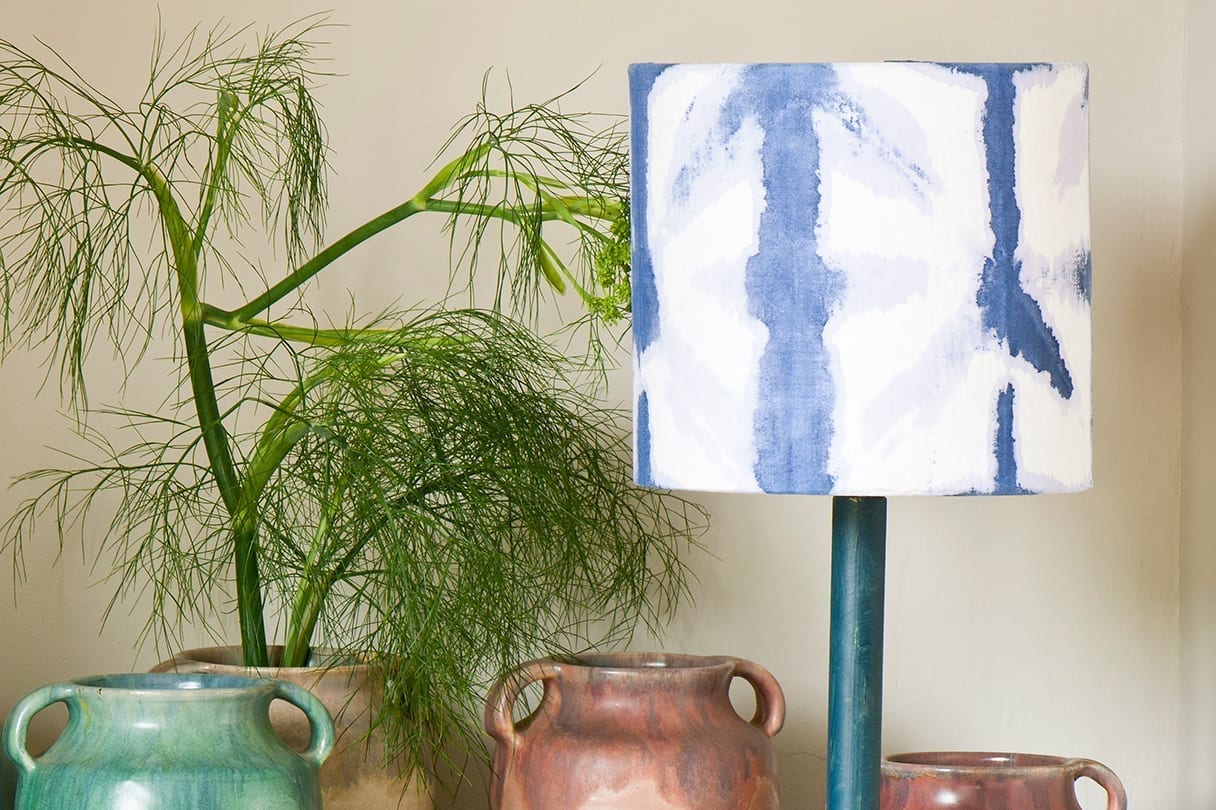You might not have the time or inclination to re-cover a dining chair with new fabric or perhaps you have a plain piece of fabric that you’d like to upcycle for a lampshade or cushion cover. This technique allows you to transform the look of fabric with paint. It’s the perfect method for adding a pattern, stripes or small areas of colour. Essentially, you’re using Chalk Paint® as a fabric dye. This means diluting the paint with water to create a wash. You don’t want to cake on the paint or soak the fabric here – think of it as brushing on the paint to transfer the pigment onto your fabric.
Once you’ve followed this tutorial, you can practice painting on different fabrics. Natural materials like Cotton and linen will absorb the dye better. And how about colour? Choosing a stronger colour from the Chalk Paint® palette will create a lovely, washed out version of that colour. Aubusson Blue will create a lovely pale denim blue. Provence a soft turquoise. Scandinavian Pink a wonderful dusty pink colour.
Step by step guide to painting on fabric
- Add a little water to your chosen Chalk Paint® colour. You can do this in a bowl or paint tray, if you like. You want to dilute the paint until it’s quite transparent. To make sure you have got the amount of water right, it’s a good idea to test this out on an unseen bit of the fabric first.
- Mark out the area that you want to paint using masking tape.
- Dip your brush in the diluted paint and wipe off any excess on the side of your bowl or tray.
- Paint your fabric, making sure the surface is evenly covered.
- Remove the masking tape.
- Once dry, heat seal either by ironing or putting it out in the sun or by tumble drying.
Now you’ve learned how to paint on fabric, you’re ready to start. If you want to build up confidence, you can test out this technique out on fabric scraps or any parts of your project that won’t be seen. Whichever colour you choose or fabric you paint on, enjoy the process of experimenting to get the look you want. When you’re done, why not share your finished project with the Annie Sloan community using #AnnieSloan. For more inspiration, take a look at these mid-century modern chairs with dye-washed seats.



